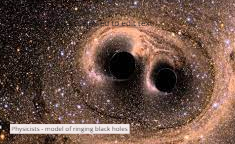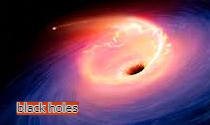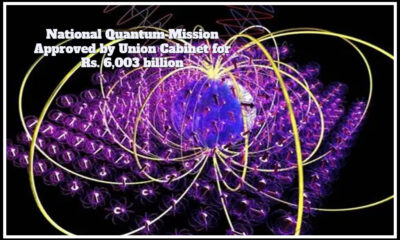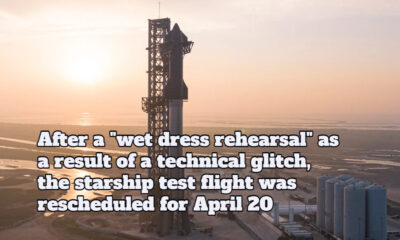Education
A new model of ringing black holes is developed by physicists
Published
1 year agoon

In this still from a simulation created by the Simulating eXtreme Spacetimes (SXS) team employing supercomputers, two black holes are ready to merge. Gravitational waves are ripples in space and time caused by the spiralling of the black holes. Thanks to the collaboration between SXS Lensing and Extreme Spacetimes.
The nature of gravitational waves in black hole collisions has previously been studied using linear math, which suggests that the gravitational waves that rippled outward were independent. The same collisions have now been more carefully modelled in recent study, revealing supposedly nonlinear effects.
Nonlinear effects take place when the waves on the beach crest and crash. The waves interact and have an impact on one another rather than moving alone.
We anticipated these effects with something as dramatic as a black hole merger, but we had not yet seen them in our simulations, according to Keefe Mitman, a graduate student at Caltech who collaborates with Saul Teukolsky (Ph.D. ’74). Now that the waveforms from our simulations can be retrieved using new methods, the nonlinearities may be seen.
The new model will help researchers better understand the actual black hole collisions that LIGO (Laser Interferometer Gravitational-wave Observatory) regularly recorded in 2015.
Mitman and his coworkers are a part of the Simulating eXtreme Spacetimes cooperation, or SXS. Black hole mergers are simulated using supercomputers as part of the SXS project, which was begun by Teukolsky in partnership with Nobel Laureate Kip Thorne (BS ’62), Emeritus Richard P. Feynman, Professor of Theoretical Physics at Caltech.
Supercomputers simulate how black holes form when they spiral together and merge using the equations from Albert Einstein’s general theory of relativity. Teukolsky was the first to recognise that the “ringdown” phase of the black hole collision, which occurs right after the two enormous objects have fused, could be simulated using these relativity equations.
Supercomputers are required to accurately calculate the full signal, including the inspiral of the two circling black holes, their merging, and their eventual settling into a single inactive residual black hole, according to Teukolsky. My Ph.D. thesis under Kip covered the linear treatment of the settling down phase quite some time ago. Further tests to determine whether general relativity is actually the right theory of gravity for black holes will be possible because to the new nonlinear approach of this phase.
Read Also: Moon, Venus, and Jupiter Converge , Mesmerizing People Worldwide on February 22
Thanks in great part to the SXS simulations, all of the approximately 100 black hole mergers that LIGO has so far witnessed have been discovered and described. With this new work, the team has for the first time identified nonlinear effects in simulations of the ringdown phase.
In the long run, these new models will aid scientists in better characterising potential black hole collisions that LIGO will observe in the future and in testing Einstein’s general theory of relativity.
“This is a huge step in preparing us for the next phase of gravitational-wave detection, which will expand our understanding of gravity in these spectacular processes taking place in the outer reaches of the cosmos,” said co-author Macarena Lagos of Columbia University.


ringing black holes is developed by physicists.
Credent TV Editorial Team

You may like
-


Following the helicopter crash, thousands grieve for Iran’s Raisi in a march in Tabriz.
-


Twitter’s paywall system has been removed from its application programming interface
-


National Quantum Mission Approved by Union Cabinet for Rs. 6,003 billion
-


the Google Pixel Fold will go on sale in June. Leaked renderings show two colour options.
-


Delhi now has Apple’s second location after Mumbai: CEO Tim Cook
-


After a “wet dress rehearsal” as a result of a technical glitch, the starship test flight was rescheduled for April 20